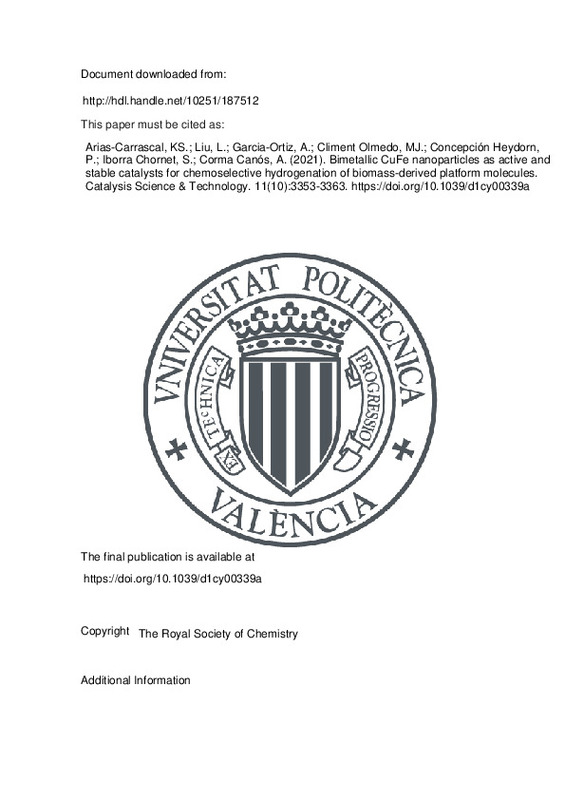JavaScript is disabled for your browser. Some features of this site may not work without it.
Buscar en RiuNet
Listar
Mi cuenta
Estadísticas
Ayuda RiuNet
Admin. UPV
Bimetallic CuFe nanoparticles as active and stable catalysts for chemoselective hydrogenation of biomass-derived platform molecules
Mostrar el registro completo del ítem
Arias-Carrascal, KS.; Liu, L.; Garcia-Ortiz, A.; Climent Olmedo, MJ.; Concepción Heydorn, P.; Iborra Chornet, S.; Corma Canós, A. (2021). Bimetallic CuFe nanoparticles as active and stable catalysts for chemoselective hydrogenation of biomass-derived platform molecules. Catalysis Science & Technology. 11(10):3353-3363. https://doi.org/10.1039/d1cy00339a
Por favor, use este identificador para citar o enlazar este ítem: http://hdl.handle.net/10251/187512
Ficheros en el ítem
Metadatos del ítem
| Título: | Bimetallic CuFe nanoparticles as active and stable catalysts for chemoselective hydrogenation of biomass-derived platform molecules | |
| Autor: | Liu, Lichen | |
| Entidad UPV: |
|
|
| Fecha difusión: |
|
|
| Resumen: |
[EN] Bimetallic CuFe nanoparticles covered by thin carbon layers were developed as a potential substitute for noble metal catalysts and have been used for chemoselective hydrogenation of 5-(hydroxymethyl)furfural (HMF) to ...[+]
|
|
| Derechos de uso: | Reserva de todos los derechos | |
| Fuente: |
|
|
| DOI: |
|
|
| Editorial: |
|
|
| Versión del editor: | https://doi.org/10.1039/d1cy00339a | |
| Código del Proyecto: |
|
|
| Agradecimientos: |
This work has been supported by the Spanish Government through the "Severo Ochoa Program" (SEV-2016-0683) and the PGC2018-097277-B-100 (MCIU/AEI/FEDER, UE) project. The authors also thank Microscopy Service of UPV for the ...[+]
|
|
| Tipo: |
|







![[Cerrado]](/themes/UPV/images/candado.png)


